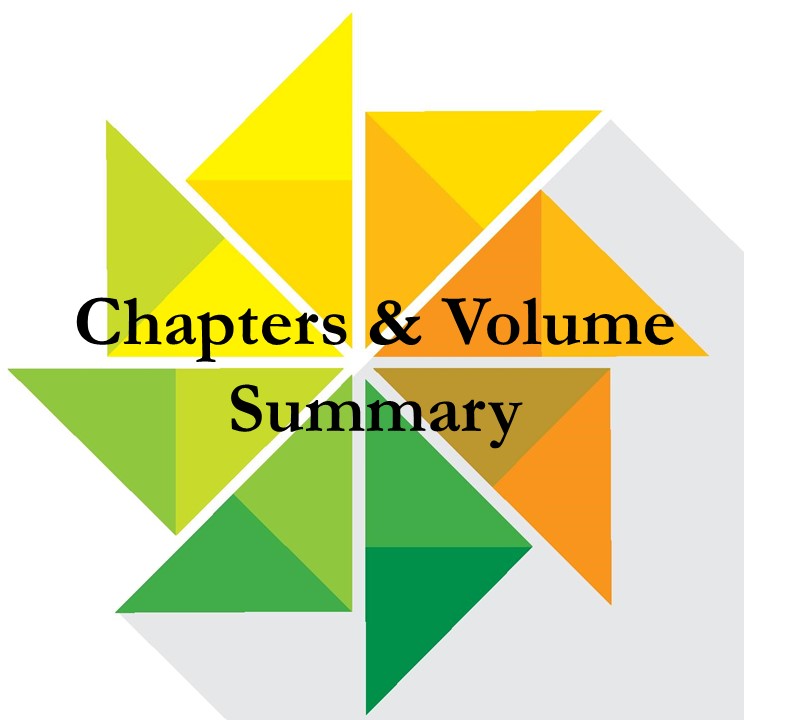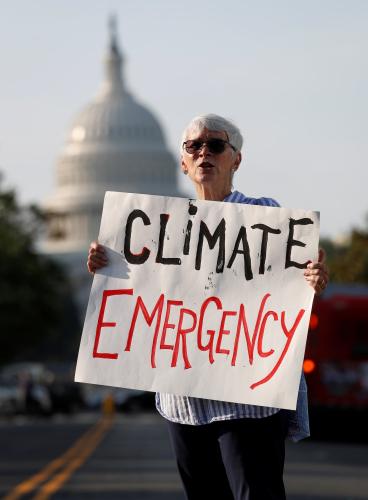Content from the Brookings Institution India Center is now archived. After seven years of an impactful partnership, as of September 11, 2020, Brookings India is now the Centre for Social and Economic Progress, an independent public policy institution based in India.
 Summary:Making Renewable Power Sustainable
Summary:Making Renewable Power Sustainable
The key areas that need policy effort or solutions, whatever these may be, focus on:
1) Finance: The high cost of capital is just one reason for the relatively high cost of renewable power. In addition to absolute costs (which are falling), risks of all power projects remain, making the required returns on investment higher than optimal. Utilities are cash strapped, and broader reforms and improvements in utility operations and finances will go a long way to making the case for renewable power (rather, all power). By some measures, traditional fossil-fuel power projects have higher risks, since they require fuel linkages, water supply, etc., and are often very large sized. On the other hand RE projects might sometimes be given a short-shrift by states, with delayed payments and other operational headaches.
2) Grid integration for renewables, with dynamics. While we now have a unified national grid, it wasn’t designed for taking Tamil Nadu wind power to Delhi air conditioners. (It’s a separate issue that the 5 Regions of India’s grid have limited interconnectivity—which must be strengthened—and dedicated transmission “green corridors” don’t entirely solve the problem).
- Coordinated and dynamic planning (and transmission pricing). For all bulk RE projects, not only must transmission be firmed up in advance, such calculations must be for a dynamic grid, instead of a static/average calculation. The transmission system today needs upgraded calculations to handle dynamics, and congestion, ideally through a pricing mechanism such as Locational Marginal Pricing (LMP).
- ToD and dynamic power pricing (bulk procurement, and eventually consumers). The broader power system needs to move towards Time of Day (ToD) pricing. While retail (consumer) ToD will take time and requires new meters, the first step should be bulk power procurement ToD by Distribution Utilities, instead of today’s generation contracts which focus on a single dimension of kilowatt-hours through PLF targets.
- Storage technologies. In addition to the technology innovations needed to reduce costs, storage technologies need an appropriate regulatory frame to provide value. In addition to ToD pricing to encourage energy arbitrage (supply: off-peak to peak, demand: peak to off-peak), storage especially helps for short-term fluctuations in supply and demand, through ancillary services.
- Ancillary Services. These are systems, which could operate through a market mechanism, but don’t have to, for keeping the grid stable, instead of just valuing kilowatt-hours. A few of the ancillary services include the ability to ramp-up/ramp-down quickly, frequency regulation, and black-start capability.
3) Forward-looking yet realistic targets, incentives, and perhaps penalties (for RPO or other non-compliance). Realistic targets that factor in transmission, grid management, variability, finance, etc. would be much more sustainable than the (almost) cycles of boom-bust that accompany support-driven growth of renewables, which collapse when the rules change. If there are Renewable Portfolio Obligations, these must be enforced, which would then send stronger pricing signals, either directly or through tradable Renewable Energy Certificates. If a Regulator wishes to set the price for renewable power, they are might not get it right. Too low and there would be few suppliers. Too high and not only would many cry foul, the buyers (utilities) would struggle to pay. This highlights the challenge of bids and so-called market solutions as being done today. They may be efficient from a supplier perspective, but this does little towards discovering utility equilibrium willingness-to-pay. In such cases, an encouraged (if not mandated) target may be required.
Any future policy plans need to also reflect structural issues of ownership and incentives. Unlike solar farms, most wind farms have many small individual owners (e.g., one turbine each), but are operated by a wind promoter. Thus, policies need clarity between owner and operator, individual turbine or farm. This also impacts any attempts at “re-powering” wind farms, a key need since older turbines are less powerful and less efficient. Here, the ability to collate and consider farms as cooperatives may be important since we have can different owners of individual turbines within a wind farm, each with different vintage, efficiency, tariff, etc.[1]
For solar power, the incentives issues is further complicated for small-scale distributed generators (e.g., roof-top solar), where now end-user’s rational economic comparison becomes between solar generation (which can be cheaper if opportunistic, i.e., without any output back-up or predictability) and retail grid-power, which has cross-subsidy based pricing, and thus higher tariffs for some classes of users, precisely the ones most likely to jump into personal renewable generation. These aren’t comparable, since the grid is inherently designed for multiple supply options, redundancy, maintenance, etc.
4) Better accounting and numbers. The above-mentioned dynamic aspects of operations and payments are just a subset of the improved data required for making renewables more sustainable.
- Predictions. While computational improvements (especially so-called “big data”, “Smart Analytics,” etc.) can help, real-time monitoring stations with instantaneous sharing of data will go a long way towards at least knowing about upcoming variability. This needs coordination, perhaps through the proposed Renewable Energy Monitoring Center(s) (REMCs). Dynamic and granular (localized) information will help grid operations – an average number isn’t good enough.
- b. Environmental impacts, especially on a lifecycle basis. While externalities are a tough challenge to handle, worldwide, even before we consider how to alleviate them (taxes, subsidies for helpful things, regulatory fiat, etc.), we first need to properly measure the externalities and other environmental impacts of energy, both renewable and conventional. A transparent framework combined with a database would be the direction to move towards.
- Jobs and employment, both during implementation and ongoing operations. Given the mix of public and private, large and small, owned and outsourced, etc., there are no good numbers on the manpower implications of green energy. Such information isn’t just to help choose technologies but also to improve deployments, especially given skilled labour (for not only deployment but operations and maintenance) is a bottleneck for many projects, especially in remote locations.
5) Innovation. Renewable energy is inherently about innovation, and R&D can help with not just the efficiency of a solution (the science), but also its costs (the engineering). India has been riding the wave of global reduction in solar panel costs, but all of its cells are based on imported silicon. One worry some folks have is to what extent are recent (low) prices the result of a global glut or push for market share? Even if that is not the case, India should not only start and expand in-country production capabilities, it should innovate for technologies needed for its own conditions, such as low-wind-speed wind turbines, hybrid (grid + home) grid-interactive inverters for solar panels that don’t switch off when the power fails but instead isolate the house and continue supplying power to the home, etc.
Some innovation is missing due to lack of policy clarity or support. Solar thermal power would benefit from Time of Day (ToD) pricing due to its ability to easily store energy for a few hours. Even more strikingly, solar thermal plants could be synergized with other fuel inputs for producing predictable if not continuous power (which also lowers the costs). However, policies in India disallowed innovation for multi-fuel options since the incentives were only for solar power, and there were worries about misuse. While measurements and cost allocations might not be 100% accurate (and based on assumptions), one could come up with transparent and fair norms for hybrid solar thermal power plants.
[1] This heterogeneity also affects operations significantly, since the utility only sees the aggregate picture being fed into the grid, but the net output is based on a number of different turbines in a wind farm. In fact, this can lead to what are termed agency problems (differences between turbine owners’ and operator’s incentives).
_______________________________________________________________________________
This chapter is a part of Brookings India’s briefing book, “Reinvigorating SAARC: India’s Opportunities and Challenges.” To view the preface and table of contents, click here.




